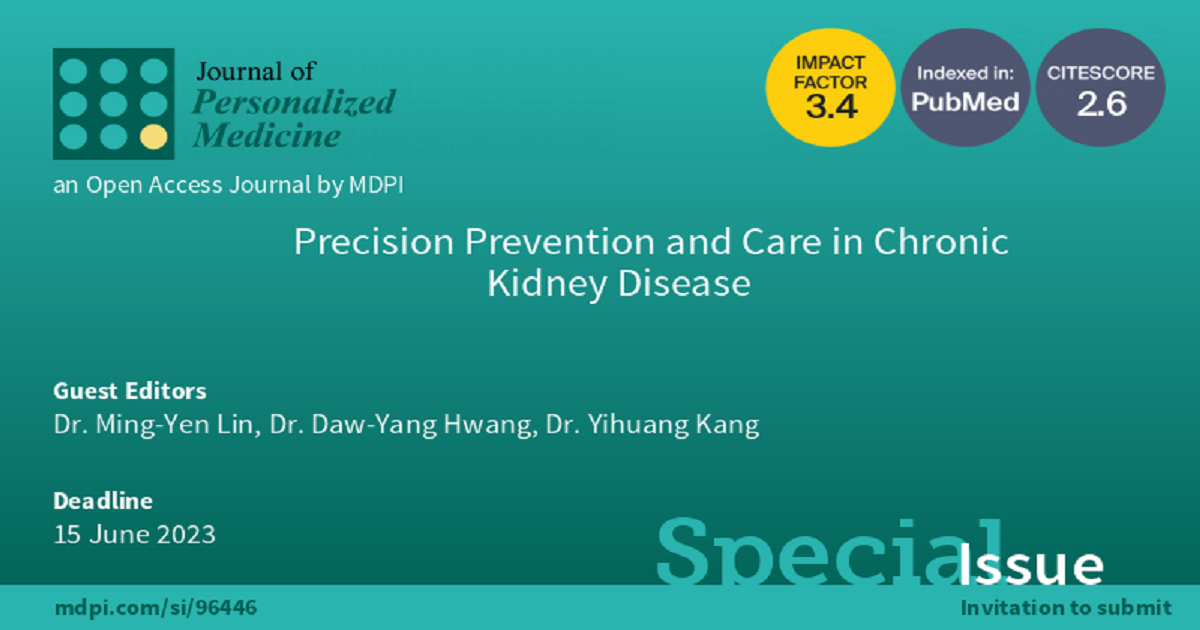Precision Prevention and Care in Chronic Kidney Disease
A special issue of Journal of Personalized Medicine (ISSN 2075-4426). This special issue belongs to the section "Mechanisms of Diseases".
Deadline for manuscript submissions: closed (15 June 2023) | Viewed by 23663

Special Issue Editors
Interests: chronic kidney disease prevention and care; causal inference; multi-sate model
Interests: disease-causing genes of human diseases; autosomal dominant polycystic kidney disease
Special Issue Information
Dear Colleagues,
Over ten percent of the world's population, or nearly 850 million people, suffer from chronic kidney disease (CKD). Many complex determinants contribute to it, and some of them may be appropriately avoided. Early CKD is usually asymptomatic, but could be detected by urinary screening. Care is the key to prolong disease progression in late CKD. However, appropriate CKD care depends on underlying diseases and complication controls. In the past decade, personalized data has been well produced and recorded. A wonderful time to assist in the development of care plans for different people who are at risk of or are suffering from CKD’s threats is coming. In this Special Issue, I would like to sincerely invite you to contribute your relevant articles on optimizing CKD prevention and care.
Dr. Ming-Yen Lin
Dr. Daw-Yang Hwang
Dr. Yihuang Kang
Guest Editors
Manuscript Submission Information
Manuscripts should be submitted online at www.mdpi.com by registering and logging in to this website. Once you are registered, click here to go to the submission form. Manuscripts can be submitted until the deadline. All submissions that pass pre-check are peer-reviewed. Accepted papers will be published continuously in the journal (as soon as accepted) and will be listed together on the special issue website. Research articles, review articles as well as short communications are invited. For planned papers, a title and short abstract (about 100 words) can be sent to the Editorial Office for announcement on this website.
Submitted manuscripts should not have been published previously, nor be under consideration for publication elsewhere (except conference proceedings papers). All manuscripts are thoroughly refereed through a single-blind peer-review process. A guide for authors and other relevant information for submission of manuscripts is available on the Instructions for Authors page. Journal of Personalized Medicine is an international peer-reviewed open access monthly journal published by MDPI.
Please visit the Instructions for Authors page before submitting a manuscript. The Article Processing Charge (APC) for publication in this open access journal is 2600 CHF (Swiss Francs). Submitted papers should be well formatted and use good English. Authors may use MDPI's English editing service prior to publication or during author revisions.
Keywords
- chronic kidney disease
- precision screening
- precision prevention
- precision care
- precision prescription
- mobile medicine
- machine learning








